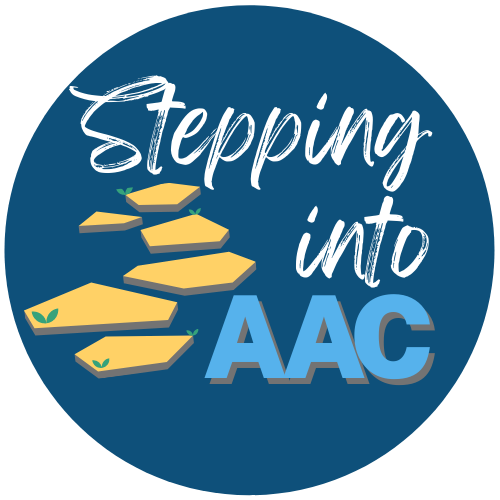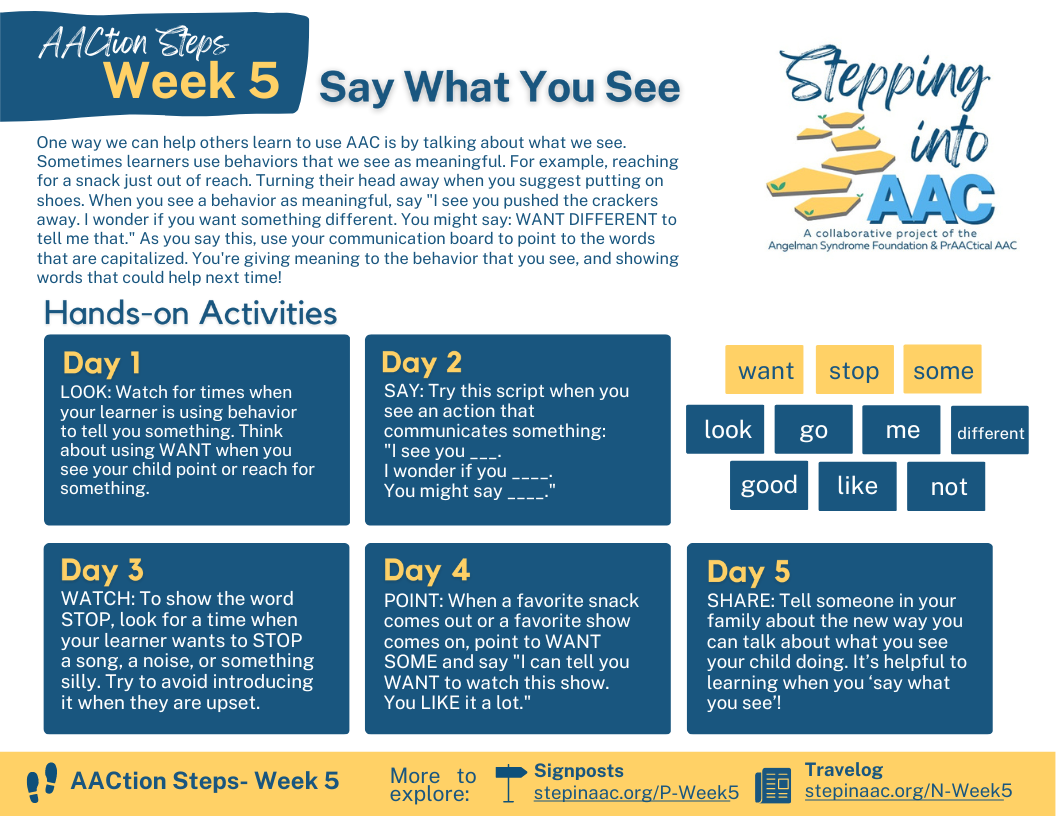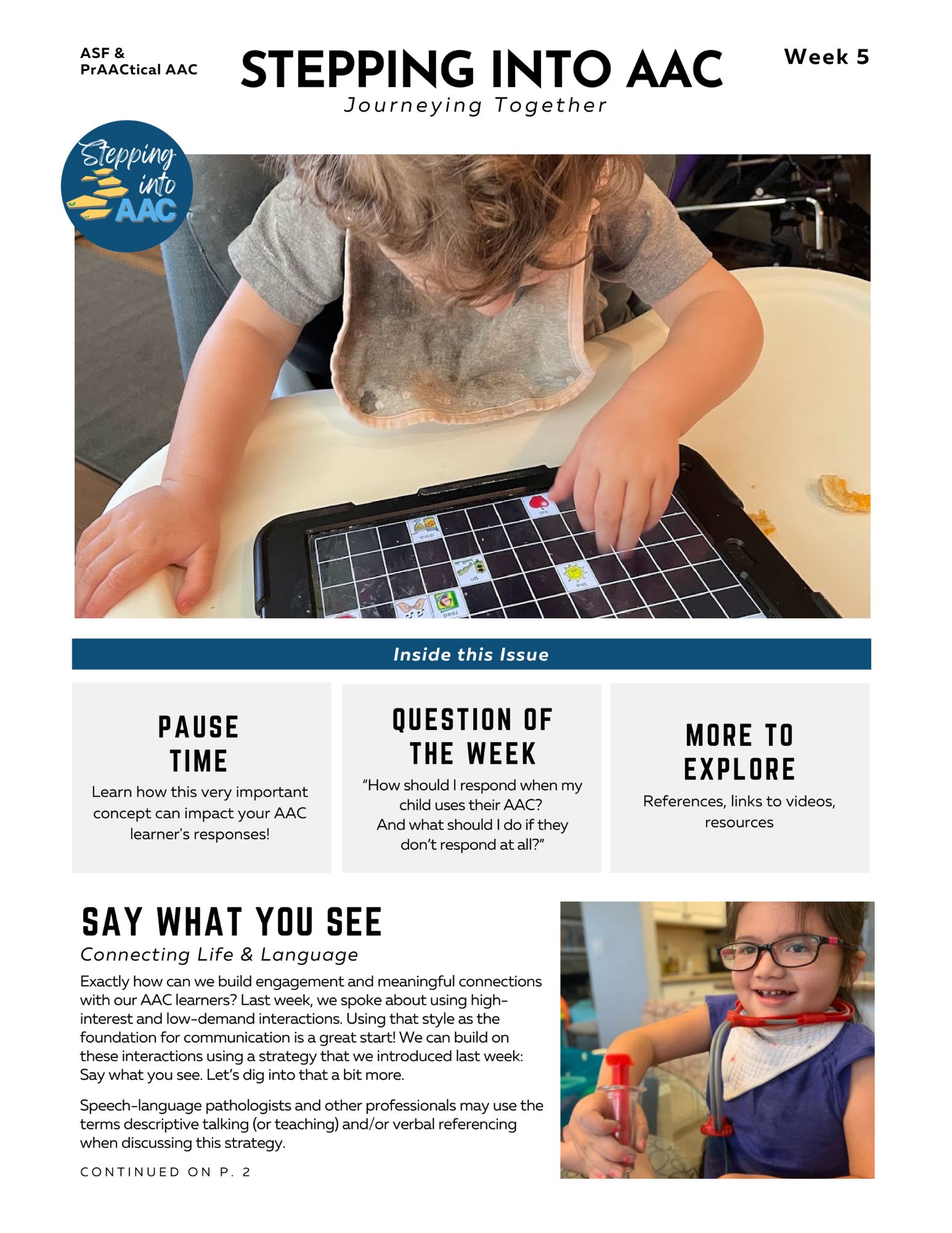
About Week 5
Welcome to the fifth week of your Stepping into AAC journey! In Week 5, we do a deep dive into key strategies for beginning AAC users.
We will explore the following concepts this week:
- Say What You See: Familiarize yourself with the concept of narrating the world around us to facilitate language development in AAC learners.
- Model AAC Without Expectation: Learn about one of the most helpful AAC support strategies we have in our toolbox.
- Pause – Give Time for AAC Learning: Expand your understanding of ‘wait time’ and the positive role it can play in interactions with AAC users.
- Make the Most of Requesting: Consider the importance of making requests along with some of the pitfalls of over-emphasizing this aspect of communication.
- Think Aloud with AAC: By giving voice to our thoughts, feelings, and internal dialogue, we can support the development of cognitive and linguistic skills and facilitate AAC use.
- Am I Doing This Right? As communication partners, we play a critical role in helping AAC learners advance their skills and communicate more effectively. You’ll learn some checkpoints to look for as you build new habits in communicating with your AAC learner.

AACtion Steps

Week 5 AACtion Steps

Signposts
Model AAC Without Expectation
This video discusses the importance of modeling AAC (Augmentative and Alternative Communication) without expecting a response from AAC learners. It emphasizes the need to build on individual communication styles and provide ample language input while creating low-pressure interactions that invite but do not require a response.
Pause – Give Time for AAC Learning
Wait time is a powerful teaching tool that strengthens synapses in the brain and supports learning. Providing pause time is crucial for some AAC learners to process and respond.
Link to References
Robert Stahl (1994)-ERIC article on wait time
Get the Handout
Make the Most of Requesting
Requesting is an essential communication function for AAC learners, but focusing solely on requests can limit learning and meaningful engagement. Build on requesting by using other communicative functions to expand and enrich interactions.
Get the Handout
Think Aloud with AAC
Using Think Alouds shows AAC learners how to use their AAC to speak aloud their thoughts, actions, and feelings. Think-alouds can include descriptions, comments, problem-solving aloud, and asking questions aloud. These techniques expand language input and help AAC learners understand and interpret situations, learn problem-solving skills, and enhance the language learning experience with AAC.
Am I Doing This Right?
Being a communication partner of an AAC learner requires flexibility, responsiveness, and engagement. There is no set road map, but checkpoints that can guide. Making mistakes and learning together is part of the process. Reflecting on our role as communication partners is crucial, considering the learner’s motivation, accepting various communication modalities, incorporating AAC throughout the day, and creating respectful and dynamic interactions.

Travelog

Week 5 Travelog
Print the Week
Want all of the resources shared in this week’s Stepping into AAC? You can download the entire digital bundle by clicking the download button below.
